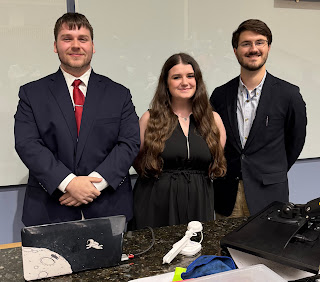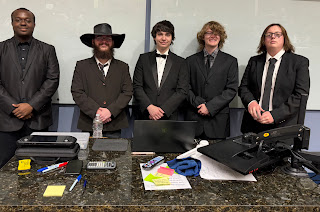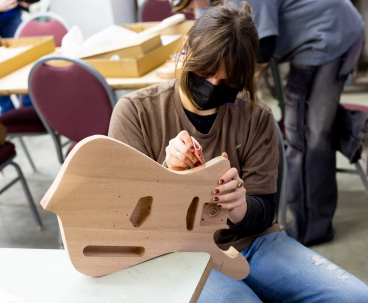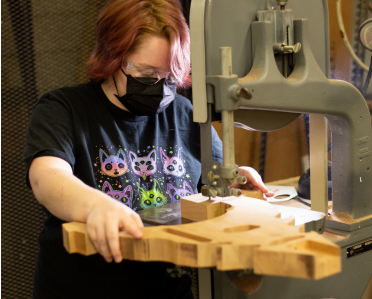Thursday, June 5, 2025
NCHC Summer Giveaway Winner
Monday, May 12, 2025
2025 Spring Graduates
Friday, May 9, 2025
Electric Guitar Show
The Electric Guitar Show was a hit! The students got to show off their guitars for the first portion of the event, then a jam session followed.
Various people played for the jam session including some of the honors students, SAU faculty, and even SAU's President Hicks!
Honors student Jonathan Parker played saxophone
Thursday, May 1, 2025
Senior Projects 2025
Honors students Christian Wiggins and Aiden Thacker presented their senior project of a game called, Blight's Grasp. The group of computer science students along with a few art students designed the game over the course of two semesters.
The Honors College is so proud of its students, and the hard work they've put in! Congratulations seniors!
Monday, April 28, 2025
Electric Guitar Making Showing and Concert
The students from Electric Guitar Making, one of the full Honors courses that was offered this spring, will be hosting an exhibition of their electric guitars created during the semester, as well as a concert on May 5th, 2025. Below are some photos throughout the semester, exhibiting the students' hard work in creating each of their guitars. Each student worked hands on throughout the entire process, from brainstorming the design they wanted, to creating the name for their final piece.
Thursday, April 24, 2025
SOAR Conference
On April 23, 2025 SAU hosted the SOAR Conference in the Reynolds Building. Honors College students in the Full Honors 3D Printing class presented posters of the projects that they have been working on throughout the semester. The objective of the students' projects was to replace a commonly used object that is typically made of metal or wood materials with a 3D printed version using more eco-friendly materials.
Molly Fanning and Joseph Bailey presented A Reusable Card Holder with Personalization and Restoration in Mind
Logan Barnett and Savannah Sivils presented A lightweight Restorable 3D Printed Bottle Opener
Jameson Foster, Christin Flory, and Jayla Carter presented a Sustainable 3D Wall Anchor for Lightweight Fixtures
Andrew O'Grady and Julissa Olivarez presented a Restorative Redesign of the Grinder Protection Cover
The students showcased not only their finished projects, but also how they were able to decrease the material waste created by the 3D printers. Through this course, along with the guidance of their professor Dr. Zghair, our students were able to highlight the increased sustainability practices that 3D printing could offer in the near future. SAU Honors College is proud of the hard work students have put in!
Monday, April 7, 2025
Honors Recognition Ceremony
This years SAU Honors Graduate Recognition Ceremony had a wonderful turn out! Students received a warm welcome from Dr. Wilson.
Students were congratulated for their years of hard work and received their Honors College Medallion. They were also given the opportunity to win some wonderful door prizes including the beautiful table donated by Ivan Smith.Thank you to the SAU faculty and staff that helped put it all together and congratulations students!







.JPEG)


.JPEG)



















.png)

